The magic of pottery: Why everyone should try it
Exploring the enchanting world of pottery is like stepping into a realm where creativity knows no bounds. Whether you're a seasoned artisan or a curious beginner, the magic of pottery has something to offer everyone. Imagine molding a simple lump of clay into a beautiful vase or a functional bowl; it's not just about creating objects, but about expressing yourself and discovering the joy that comes with it. Pottery is more than a hobby; it's a journey that allows you to connect with your inner artist and find peace in the process.
At its core, pottery is a tactile experience. The sensation of clay gliding through your fingers can be incredibly therapeutic. As you knead and shape the clay, you might find that your worries begin to melt away, leaving room for mindfulness and creativity. It's an art form that encourages you to be present in the moment, much like meditation. Have you ever thought about how working with your hands can ground you in a world that often feels chaotic? Pottery does just that.
Moreover, the benefits of pottery extend beyond relaxation. Engaging in this craft can boost your mental well-being, enhance your fine motor skills, and even improve your focus. Each piece you create tells a story, reflecting your emotions and experiences. The beauty of pottery lies in its imperfections; every crack and uneven surface adds character to your work. So, why not dive into this captivating world? You might just discover a newfound passion that enriches your life in unexpected ways.
In the following sections, we will explore the therapeutic benefits of pottery, the essential tools and materials you need to get started, and the various techniques that can elevate your creations. Whether you're considering joining a pottery class or simply want to try your hand at home, there's a wealth of knowledge waiting for you. So grab your apron, roll up your sleeves, and let’s embark on this magical journey of pottery together!
Engaging in pottery offers numerous mental health benefits, including stress relief and mindfulness. The creative process can enhance emotional well-being and promote relaxation, allowing individuals to escape the hustle and bustle of everyday life. Think of pottery as a form of therapy; it provides a safe space to explore your thoughts and feelings while creating something beautiful. The act of shaping clay can be incredibly cathartic, helping to release pent-up emotions and fostering a sense of accomplishment.
Before starting your pottery journey, it's important to understand the essential tools and materials. You’ll need various types of clay, tools for shaping and trimming, and a kiln for firing your creations. Each tool plays a vital role in the pottery-making process. For instance, a potter's wheel can help you create symmetrical pieces, while hand tools can add intricate details to your work. Having the right equipment will not only make your experience more enjoyable but also elevate the quality of your creations.
Different types of clay serve unique purposes in pottery. Understanding the characteristics and uses of various clay types is crucial for beginners. Here’s a brief overview:
| Type of Clay | Characteristics | Best Uses |
|---|---|---|
| Earthenware | Versatile, easy to work with | Decorative pieces, low-fire pottery |
| Stoneware | Durable, high-fired | Functional ware, dinnerware |
Earthenware is a popular choice for beginners due to its versatility and ease of use. It fires at a lower temperature, making it forgiving for those just starting out. This type of clay is perfect for creating decorative pieces and can be easily painted or glazed to enhance its appearance. If you’re looking to experiment with color and design, earthenware is your go-to option.
Stoneware, on the other hand, offers durability and strength, making it suitable for functional pieces. It fires at a higher temperature, resulting in a dense and non-porous finish. Many experienced potters favor stoneware for its ability to withstand everyday use. Whether you're crafting mugs or baking dishes, stoneware is an excellent choice for practical pottery.
Understanding various pottery techniques is crucial for creating stunning works of art. From hand-building to wheel throwing, each method offers a unique way to express your creativity. Hand-building allows for more freedom and experimentation, while wheel throwing provides precision and symmetry. As you delve into these techniques, you’ll find that each has its own charm and challenges, making the learning process all the more exciting.
Q: Do I need prior experience to start pottery?
A: No prior experience is necessary! Pottery is accessible to everyone, and many classes cater to beginners.
Q: What should I wear to a pottery class?
A: Wear comfortable clothes that you don’t mind getting dirty. An apron can also help protect your clothing.
Q: Can pottery be a profitable venture?
A: Absolutely! Many potters sell their creations at local markets or online, turning their passion into a side business.
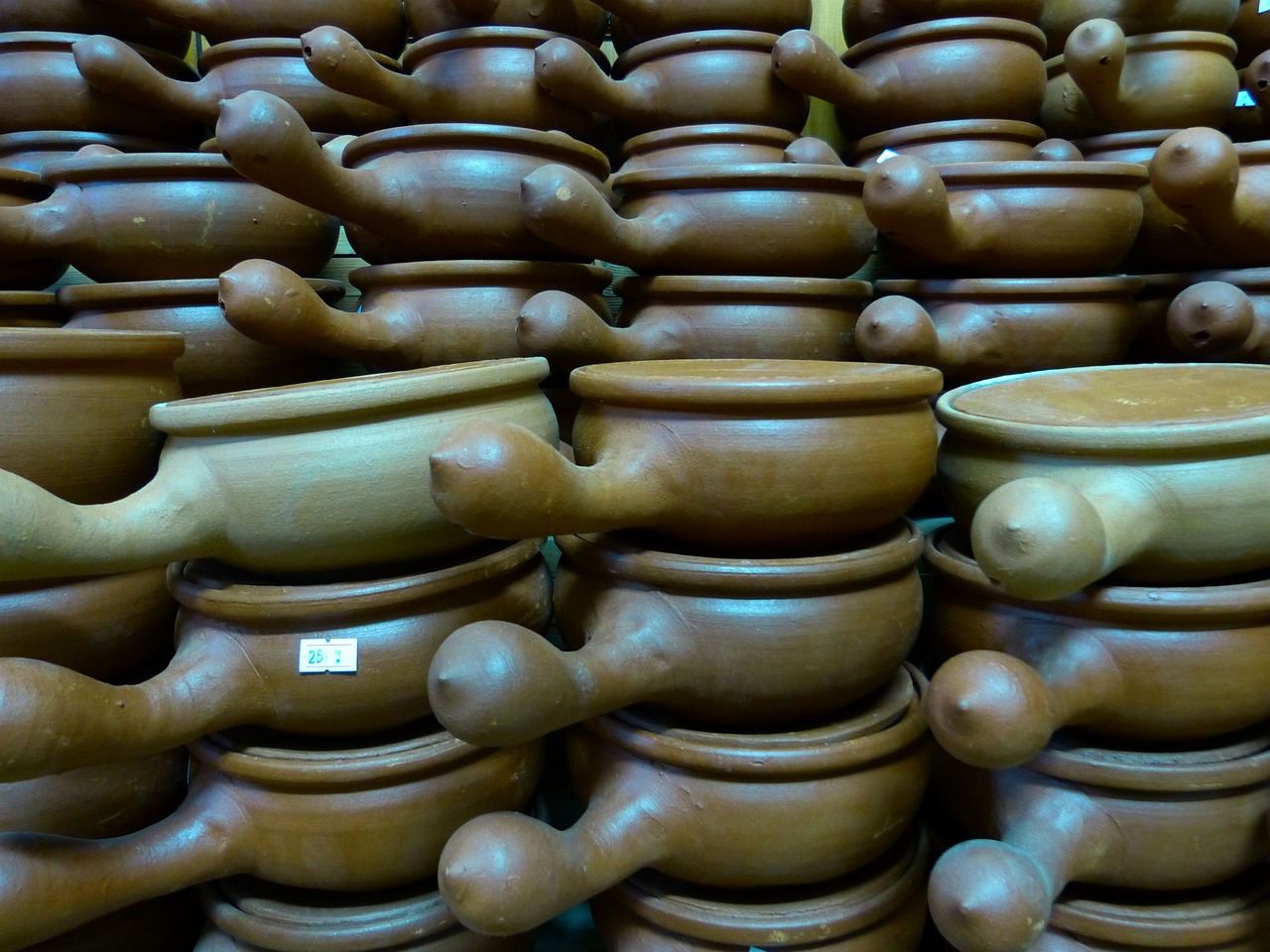
The Therapeutic Benefits of Pottery
Engaging in pottery isn't just about creating beautiful objects; it’s a delightful journey into the realm of self-discovery and emotional healing. The tactile nature of working with clay allows individuals to connect with their inner selves, providing a unique form of therapy that can be both relaxing and invigorating. Imagine the sensation of your fingers sinking into the soft, malleable clay, each touch releasing the tension built up from daily life. Pottery offers a sanctuary where stress melts away, and creativity flourishes.
One of the most profound benefits of pottery is its ability to promote mindfulness. When you're focused on shaping a piece, your mind shifts away from the chaos of the outside world. This state of flow can lead to a meditative experience, allowing you to be fully present in the moment. Think about it: how often do we get lost in our thoughts, worrying about the future or ruminating on the past? Pottery helps anchor us, bringing our attention back to the here and now.
Moreover, the act of creating something with your hands can lead to a significant boost in self-esteem. As you mold and shape your clay, you witness tangible progress. Each piece you create, whether it’s a simple bowl or an intricate vase, serves as a reminder of your capabilities. This sense of accomplishment can be incredibly empowering, especially for those who may struggle with self-doubt. It’s like planting a seed of confidence that grows with each successful project.
In addition to personal growth, pottery can foster a sense of community. Many pottery studios offer classes where individuals come together to learn and share their passion for this art form. The shared experience of working with clay can lead to lasting friendships and a support system that encourages creativity. Imagine sitting around a potter’s wheel with others, exchanging tips and ideas while enjoying a good laugh; it’s a recipe for happiness!
Finally, engaging in pottery can serve as a powerful outlet for emotional expression. Whether you’re feeling joy, sadness, or even anger, shaping clay allows you to channel those emotions into something tangible. The process can be cathartic, helping you to process feelings that may be difficult to articulate. Just like a painter uses colors to express their mood, potters can use shapes and textures to convey their inner thoughts and feelings.
To sum up, the therapeutic benefits of pottery are vast and varied. It’s a journey that not only enhances your artistic skills but also nurtures your mental well-being. So, why not give it a try? You might just discover a new passion that brings joy and serenity into your life!
- What materials do I need to start pottery?
To begin, you will need clay, a potter's wheel (if you choose wheel throwing), basic tools, and a kiln for firing your pieces. - Can pottery help with anxiety?
Yes, many people find that the meditative nature of working with clay helps reduce anxiety and promotes relaxation. - Do I need prior experience to join a pottery class?
Not at all! Pottery classes cater to all skill levels, from beginners to advanced artisans.

Essential Tools and Materials
Before you dive into the mesmerizing world of pottery, it's crucial to equip yourself with the right tools and materials. Think of it as gearing up for an adventure; having the essentials at your fingertips can transform your experience from daunting to delightful. So, what exactly do you need to get started? Let’s break it down!
First, let's talk about clay. This is your primary material, and choosing the right type is key to your success. There are various types of clay, each with its unique properties and uses. For beginners, earthenware is often recommended due to its versatility and ease of handling. Stoneware, on the other hand, is favored by seasoned potters for its strength and durability. Understanding these differences will help you select the right clay for your projects.
Next up, you'll need some essential tools. Here’s a quick rundown of the must-haves:
- Pottery Wheel: If you plan to throw pots, a pottery wheel is indispensable. It allows for greater precision and control over your creations.
- Hand Tools: These include ribs, trimming tools, and needles, which help shape and refine your pieces.
- Rolling Pin: Perfect for flattening clay and creating slabs for hand-building.
- Sponge: Useful for smoothing surfaces and adding moisture when needed.
- Kiln: Essential for firing your pieces, though many beginners opt to use community studios that offer kiln access.
In addition to tools, you'll also want to gather some supplies that will enhance your pottery-making experience. These can include:
- Glazes: To add color and finish to your work.
- Plastic Wrap: Helps keep your clay moist during breaks.
- Apron: To protect your clothing from clay and glaze splatters.
Finally, don't forget about your workspace! A clean, organized area where you can create freely is essential. Consider setting up a sturdy table, good lighting, and easy access to water for cleaning your tools and hands. The more comfortable your environment, the more you'll enjoy the process of creating.
In summary, starting your pottery journey requires a blend of the right materials and tools. By investing a little time and thought into gathering these essentials, you’ll set the stage for a rewarding and creative adventure. Remember, every great potter started with the basics, so don’t hesitate to dive in and let your imagination run wild!
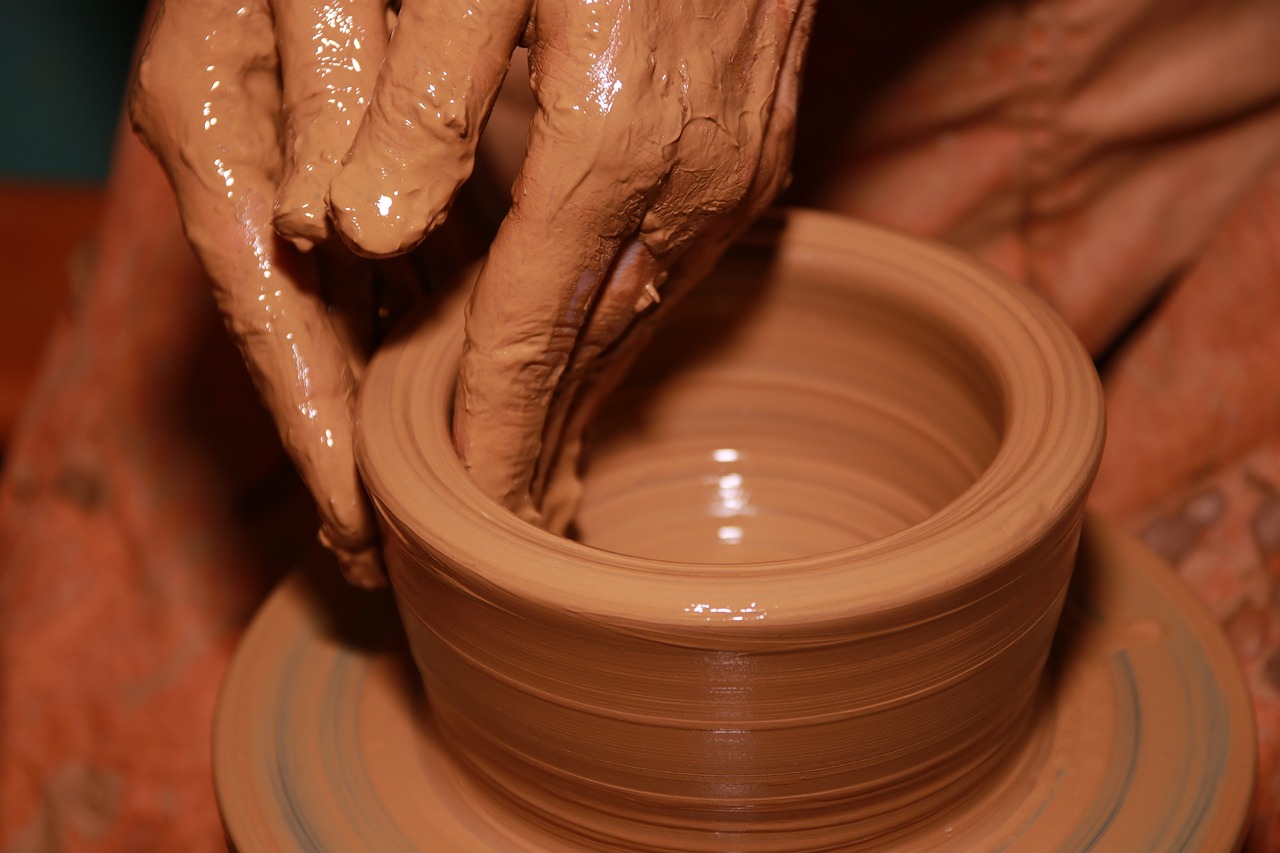
Types of Clay
When it comes to pottery, the type of clay you choose can make a significant difference in the outcome of your work. Each type of clay has its own unique properties, which influence not only the final appearance of your pieces but also how they behave during the crafting process. Understanding these differences is essential for any potter, whether you're just starting out or are a seasoned artisan looking to expand your repertoire. Below, we explore the primary types of clay used in pottery, highlighting their characteristics and ideal applications.
The three most common types of clay in pottery are earthenware, stoneware, and porcelain. Each type has its own unique qualities that cater to different artistic needs:
- Earthenware: This is the most accessible clay for beginners. It is known for its softness and versatility, making it easy to work with. Earthenware is typically fired at lower temperatures, which gives it a porous quality. This means that pieces made from earthenware may require glazing to make them waterproof. It's perfect for decorative items, plant pots, and simple tableware.
- Stoneware: If you're looking for durability, stoneware is your go-to choice. This clay is fired at higher temperatures, resulting in a strong, non-porous finish. Stoneware is ideal for functional pieces like dinnerware, mugs, and baking dishes. Its ability to withstand thermal shock makes it a favorite among experienced potters.
- Porcelain: Often considered the "queen" of clays, porcelain is renowned for its delicacy and beauty. It is fired at the highest temperatures, resulting in a glass-like finish that is both strong and translucent. Porcelain is perfect for intricate designs and fine tableware, but it can be more challenging to work with due to its less forgiving nature.
Understanding these types of clay can help you choose the right one for your project. For instance, if you're creating a piece that needs to endure everyday use, stoneware might be the best option. On the other hand, if you're looking to create a decorative item that showcases intricate details, porcelain could be your clay of choice. As you experiment with these different types, you'll discover how each one influences your artistic expression and the final results of your work.
In addition to these main types, there are also specialized clays such as paper clay, which is mixed with paper fibers to create a lightweight and easily moldable material, and grogged clay, which contains sand or other materials to add texture and strength. Each type opens up a new world of possibilities for your pottery creations.
Ultimately, the type of clay you choose will depend on your personal style, the specific project you're working on, and the techniques you wish to explore. So, dive in, experiment, and let your creativity flow!
What is the best clay for beginners?
Earthenware is often recommended for beginners due to its softness and ease of use. It allows new potters to learn basic techniques without feeling overwhelmed.
Can I mix different types of clay?
While it is possible to mix different types of clay, it's essential to consider their firing temperatures and shrinkage rates. Mixing clays can lead to unexpected results, so it's best to experiment cautiously.
How do I know which clay to use for my project?
Consider the function and desired aesthetic of your piece. For example, use stoneware for functional items and porcelain for delicate, artistic creations.
What tools do I need for working with clay?
Basic tools include a pottery wheel (if you plan to throw), various shaping tools, a wire cutter, and a kiln for firing your pieces. As you progress, you may find additional tools that suit your style.

Earthenware
When it comes to pottery, is often the first type that comes to mind for beginners, and for good reason! This type of clay is incredibly versatile and user-friendly, making it an ideal choice for those just starting their pottery journey. One of the most appealing aspects of earthenware is its low firing temperature, which typically ranges from 1,830°F to 2,100°F (1,000°C to 1,150°C). This means you can fire your creations in a range of kilns, including electric, gas, and even wood-fired options!
Earthenware is known for its porous nature, which allows it to absorb moisture. This characteristic makes it less durable than other types of clay, such as stoneware, but it also opens up a world of creative possibilities. For instance, you can use earthenware to create beautiful ceramic tiles, decorative pottery, and even functional items like bowls and mugs. The porous quality also means that earthenware pieces can be easily decorated with glazes and underglazes, allowing you to express your artistic flair.
Another fantastic attribute of earthenware is its affordability. As a beginner, you may not want to invest heavily in materials until you’re sure about your pottery passion. Earthenware provides a cost-effective way to experiment and hone your skills without breaking the bank. Plus, it's widely available at craft stores and online, making it accessible for everyone.
However, it’s important to note that earthenware is not suitable for all types of projects. Because of its porous nature, it’s not ideal for items that will hold liquids unless properly glazed. Additionally, earthenware can be more susceptible to chipping and breaking compared to stoneware or porcelain. Therefore, it’s essential to consider the intended use of your pottery pieces before diving in.
In summary, earthenware is a fantastic starting point for anyone interested in pottery. Its low firing temperature, affordability, and versatility make it a favorite among beginners. As you get more comfortable with your skills, you might find yourself exploring other types of clay, but earthenware will always hold a special place in your heart as the clay that started it all!
- What is earthenware used for?
Earthenware is commonly used for decorative pottery, tiles, and functional items like bowls and mugs. - Can earthenware be used for food?
Yes, but it must be properly glazed to ensure it is safe for food use. - How do I care for earthenware pottery?
It’s best to hand wash earthenware and avoid extreme temperature changes to prevent cracking. - Is earthenware waterproof?
Earthenware is porous, so it is not waterproof unless glazed.
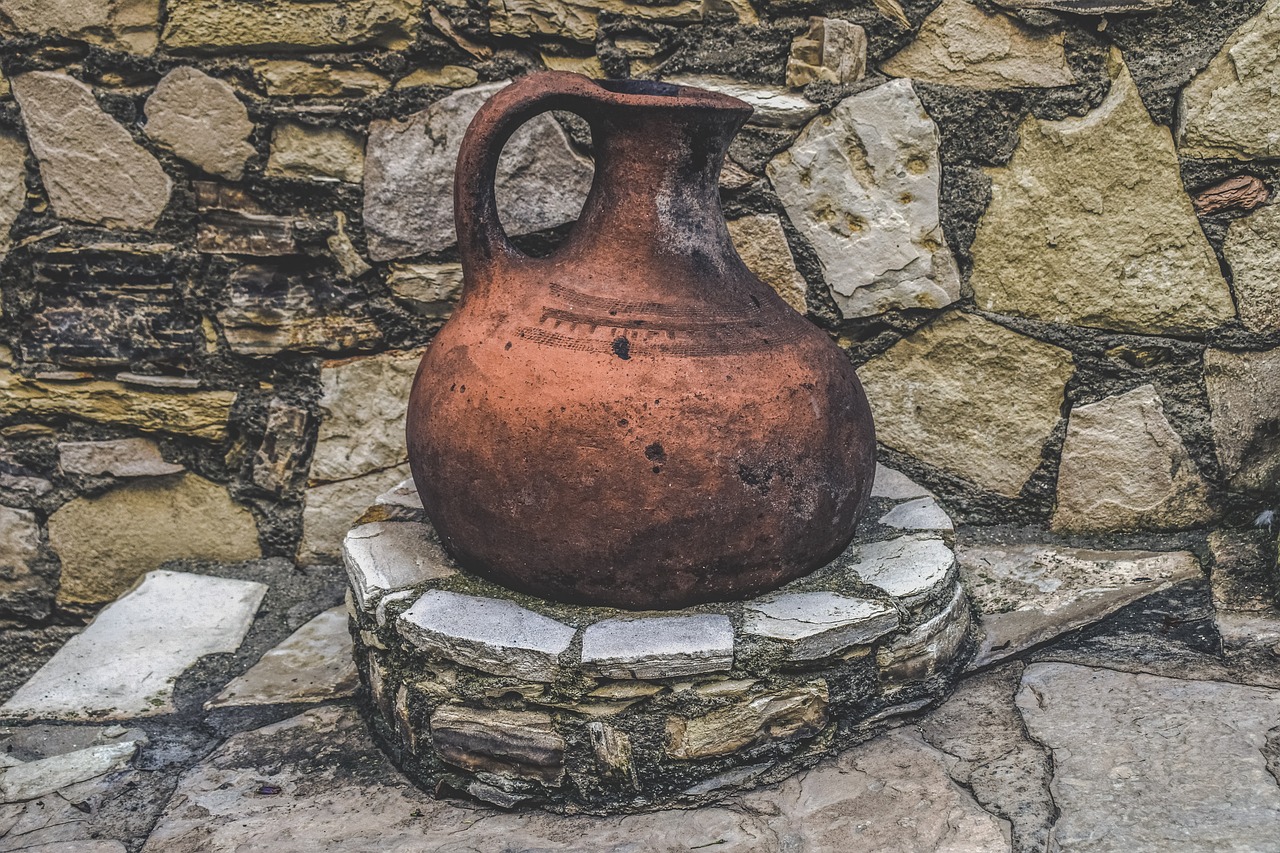
Stoneware
When it comes to pottery, is a true heavyweight, both literally and figuratively. This type of clay is known for its durability and strength, making it a favorite among potters who want to create functional pieces that can withstand the test of time. Stoneware is fired at a higher temperature than earthenware, which gives it a dense and non-porous quality. This means that not only can you use it for beautiful decorative items, but it’s also perfect for everyday use, such as dinnerware and bakeware. Imagine pulling a steaming casserole out of the oven, its rich, earthy tones glistening under the kitchen light—this is the magic of stoneware!
One of the most appealing aspects of stoneware is its versatility. It can be glazed in a variety of colors and finishes, allowing artists to express their creativity in countless ways. Whether you prefer a rustic matte finish or a glossy, vibrant glaze, stoneware can accommodate your artistic vision. Plus, its ability to retain heat makes it ideal for serving hot dishes, keeping your food warm for longer periods. It’s like having a little bit of magic in your kitchen!
For those who are just starting their pottery journey, working with stoneware might seem daunting, but it’s truly rewarding. Here are some key characteristics that make stoneware a popular choice:
- High Durability: Stoneware can handle thermal shock, meaning it won’t crack easily when exposed to sudden temperature changes.
- Non-Porous: Once fired, stoneware doesn’t absorb moisture, making it resistant to staining and odors.
- Versatile Use: From baking dishes to mugs, stoneware can be used for a wide range of functional items.
However, it’s essential to note that working with stoneware does require some specific techniques. The clay is often stiffer than earthenware, which can make it a bit more challenging to shape and mold. But don’t let that discourage you! With some practice and patience, you’ll be able to master the art of stoneware pottery. So, grab your tools and let’s get started!
In conclusion, stoneware is not just a material; it’s a testament to the beauty and functionality of pottery. Whether you’re a seasoned potter or a curious beginner, exploring stoneware will undoubtedly enrich your pottery experience. So why not give it a try? You might just find that it becomes your favorite medium!
1. What is the difference between stoneware and earthenware?
Stoneware is fired at a higher temperature than earthenware, making it denser and more durable. Earthenware is more porous and typically used for decorative items.
2. Can stoneware go in the microwave?
Yes, most stoneware is microwave-safe, but it’s always best to check the manufacturer’s instructions to be sure.
3. How do I care for my stoneware pottery?
To maintain your stoneware, avoid sudden temperature changes and use gentle cleaning methods. Most stoneware is dishwasher-safe, but hand washing is recommended to preserve the glaze.
4. Is stoneware safe for food use?
Absolutely! Stoneware is generally safe for food use, as it is non-toxic and does not leach harmful substances into food.
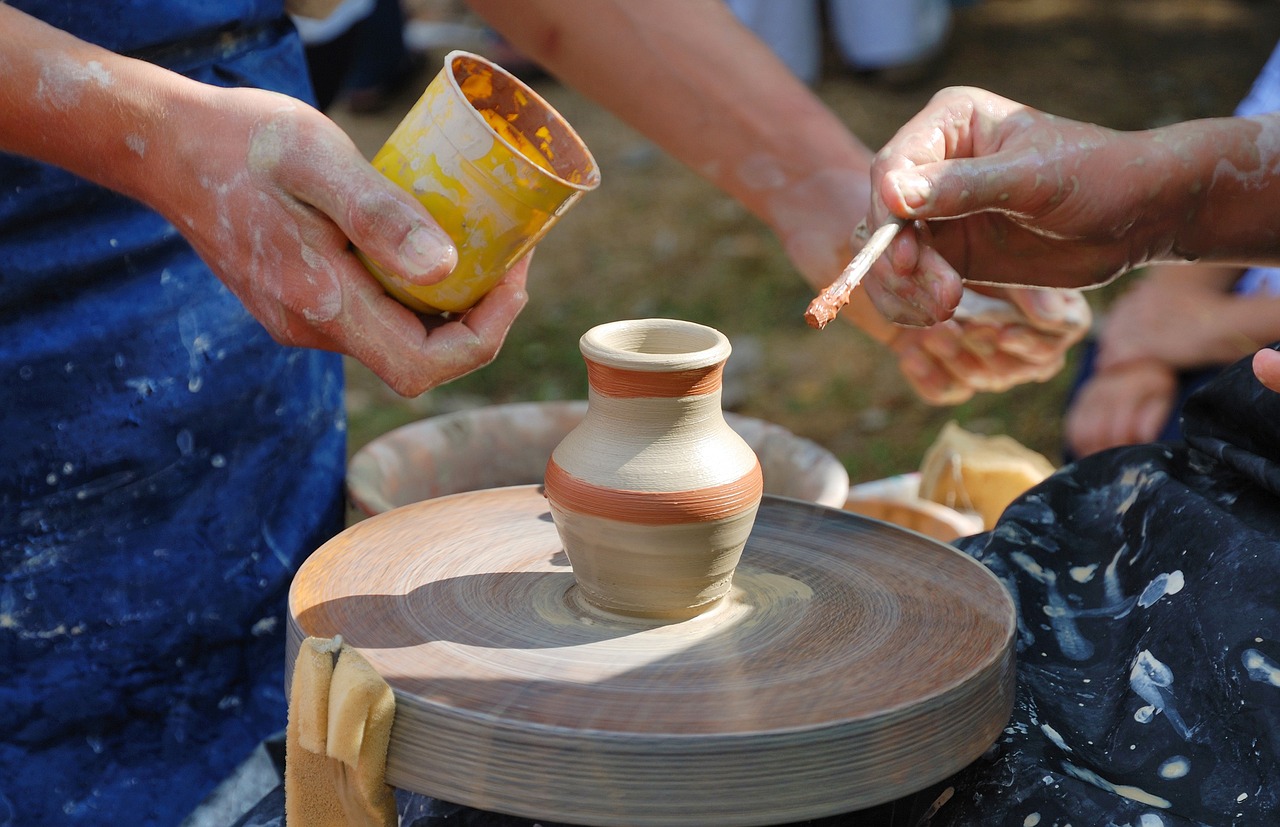
Pottery Techniques
When it comes to creating stunning pottery, understanding the various techniques is absolutely essential. Each method offers a unique way to manipulate clay, allowing artists to express their creativity in diverse forms. Whether you're a beginner or a seasoned potter, mastering these techniques can elevate your work to new heights. Let's dive into some of the most popular pottery techniques that every potter should know!
One of the most traditional methods is hand-building, which involves shaping clay by hand without the use of a potter's wheel. This technique allows for a more personal touch, as you can mold the clay into any shape you desire. There are several hand-building techniques, such as pinch pots, coil building, and slab construction. For instance, pinch pots are made by simply pinching the clay into a bowl shape, while coil building involves rolling out long strands of clay and stacking them to form a vessel. This method not only fosters creativity but also provides an intimate connection with the material.
On the other hand, wheel throwing is a technique that requires a potter's wheel, offering a different kind of experience. This method allows for precision and symmetry, as the wheel spins the clay, enabling potters to create perfectly round forms. It can be a bit challenging for beginners, but once you get the hang of it, the results can be truly mesmerizing. The thrill of watching a lump of clay transform into a beautiful bowl or vase right before your eyes is an experience like no other!
Another fascinating technique is sculpting, where potters can create intricate designs and shapes by adding details to their pieces. This can be done by carving, adding clay embellishments, or even combining different types of clay to create textures and patterns. Sculpting allows for a higher level of artistry, enabling potters to tell stories through their work. Imagine creating a piece that not only serves a functional purpose but also captivates viewers with its artistry!
It’s also important to consider glazing techniques, which can dramatically alter the final appearance of your pottery. Glazes can add color, texture, and a glassy finish to your creations. There are various glazing methods, such as dipping, pouring, or spraying, each yielding different effects. Understanding how glazes react during firing is crucial, as it can lead to surprising and beautiful results. This is where the magic truly happens, turning your clay creations into vibrant artworks!
In conclusion, mastering pottery techniques is a journey filled with exploration and discovery. Each method, whether it’s hand-building, wheel throwing, sculpting, or glazing, offers its own set of challenges and rewards. So why not grab some clay and start experimenting? You never know what beautiful creations await you!
- What is the best technique for beginners? Hand-building is often recommended for beginners as it allows for more freedom and less complexity.
- Do I need a potter's wheel to make pottery? No, you can create beautiful pottery using hand-building techniques without a wheel.
- How long does it take to learn pottery? It varies from person to person, but with consistent practice, you can start feeling comfortable within a few weeks.
- Can I use any type of clay for all techniques? Different techniques may require specific types of clay, so it's essential to choose the right one for your project.

Joining a Pottery Class
Have you ever thought about diving into the world of pottery? Taking a pottery class can be a game-changer for both beginners and seasoned artisans. Not only does it provide a structured environment to learn new skills, but it also opens doors to a community of fellow pottery enthusiasts. Imagine being surrounded by people who share your passion for clay, all while learning from an experienced instructor who can guide you through the intricacies of the craft. It’s like stepping into a cozy café filled with the aroma of fresh coffee, where every sip brings comfort and joy.
One of the biggest advantages of joining a pottery class is the accelerated learning it offers. When you're in a class setting, you have immediate access to feedback. Instead of struggling alone at home, you can ask questions, get tips, and even learn from the mistakes of others. This collaborative atmosphere not only enhances your skills but also boosts your confidence. You’ll find yourself trying techniques you never thought possible, all because you’re surrounded by encouragement and support.
Moreover, pottery classes often provide all the necessary tools and materials, which can be a huge relief for beginners. Instead of worrying about what clay to buy or which tools are essential, you can focus entirely on the creative process. Picture yourself getting your hands dirty, molding clay into beautiful shapes, while your instructor demonstrates techniques right in front of you. It’s a hands-on experience that books or online tutorials simply can’t replicate.
When searching for the right pottery class, consider a few key factors. Look for classes that offer a small student-to-instructor ratio; this ensures you receive personalized attention. Additionally, check the instructor's qualifications. Are they experienced potters? Do they have a teaching background? A skilled instructor can make all the difference in your learning journey.
Another exciting aspect of joining a pottery class is the sense of community it fosters. Pottery is not just about creating; it’s also about connecting. Many friendships blossom in the studio as you share laughs, stories, and, of course, your creations. You might find yourself collaborating on projects or participating in group exhibitions, which can be incredibly fulfilling. After all, isn’t it wonderful to share your artistic journey with others?
In conclusion, joining a pottery class can be a transformative experience. It’s not just about learning how to make beautiful pottery; it’s about discovering a new passion, meeting like-minded individuals, and enjoying the therapeutic benefits of working with your hands. So why not take that leap? Sign up for a class today and embrace the magic of pottery!
- What should I wear to a pottery class? Wear comfortable clothing that you don’t mind getting dirty. An apron can help protect your clothes.
- Do I need any prior experience? Not at all! Most classes cater to all skill levels, from complete beginners to experienced potters.
- What if I don’t have my own tools? Most classes provide all the necessary tools and materials, so you don’t need to worry about purchasing anything upfront.
- How long do pottery classes typically last? Classes can vary in length, but many are around 1.5 to 2 hours per session, often held weekly.
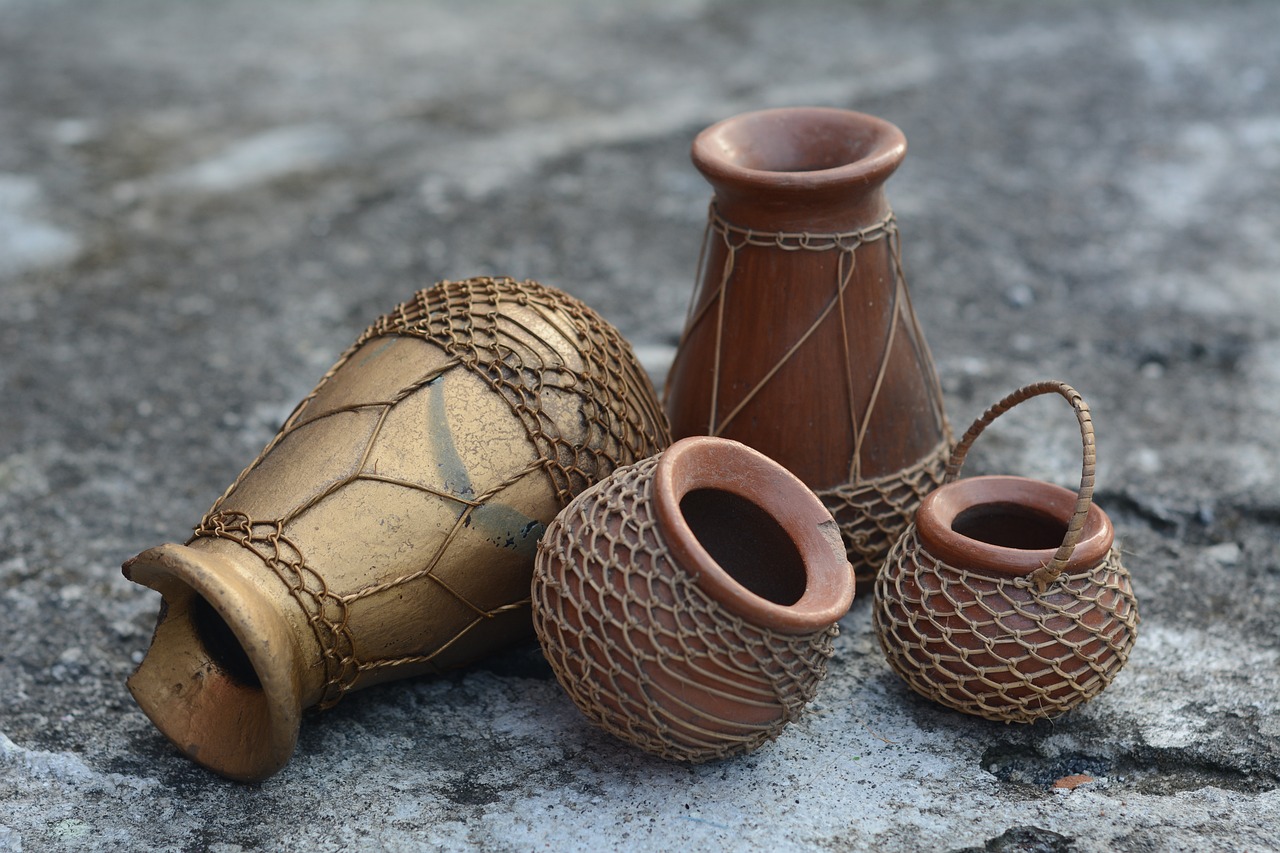
Finding the Right Class
Choosing the right pottery class can feel like searching for a needle in a haystack, especially with so many options available. You might be asking yourself, "How do I know which class is the best fit for me?" Well, fear not! Here are some key factors to consider that will help you make an informed decision.
First and foremost, consider the instructor's qualifications. A knowledgeable and experienced teacher can make all the difference in your pottery journey. Look for instructors who have a background in ceramics, whether through formal education or extensive hands-on experience. You want someone who can guide you through the intricacies of pottery while also encouraging your creative expression. A great instructor will not only teach you the techniques but will also inspire you to explore your unique style.
Next, think about the class size. Smaller classes often provide more personalized attention, allowing you to receive feedback on your work and ask questions directly. If you're in a larger class, you might find it challenging to get the support you need. So, look for classes that maintain a manageable size, ensuring that you can engage with your instructor and fellow students effectively.
Another important aspect to consider is the class schedule and duration. Make sure the class times fit well with your lifestyle. Some classes may meet weekly, while others might be intensive workshops over a weekend. Determine which format works best for you based on your availability and learning preferences. This way, you can fully commit to the experience without feeling rushed or overwhelmed.
Also, don’t forget to check out the studio facilities. A well-equipped studio can enhance your learning experience significantly. Look for classes that offer access to quality tools and materials, as well as a clean and organized workspace. If possible, visit the studio beforehand to get a feel for the environment. A welcoming and inspiring space can ignite your creativity and make your pottery experience even more enjoyable.
Lastly, consider the cost of the class. While it's essential to invest in your education, you also want to ensure that the class fits within your budget. Some studios offer sliding scale fees or payment plans, which can make it easier to participate. Remember, the most expensive option isn't always the best; focus on the value you’ll receive in terms of skills learned and personal growth.
In summary, finding the right pottery class involves a combination of factors including instructor qualifications, class size, schedule, studio facilities, and cost. Take your time to research and visit potential classes, and don’t hesitate to ask questions. After all, this is about you discovering your passion for pottery and unleashing your inner artist!
- What should I wear to a pottery class? It's best to wear comfortable clothes that you don't mind getting dirty. An apron can also help protect your clothes!
- Do I need to have prior experience in pottery? Absolutely not! Most classes cater to all skill levels, from complete beginners to seasoned potters.
- How long does it take to complete a pottery piece? The time varies based on the complexity of the piece and the techniques used, but you can typically expect to spend several hours on a single project.
- Can I take my pottery home after class? Yes, most classes allow you to take your finished pieces home, though some may require a firing process that takes additional time.
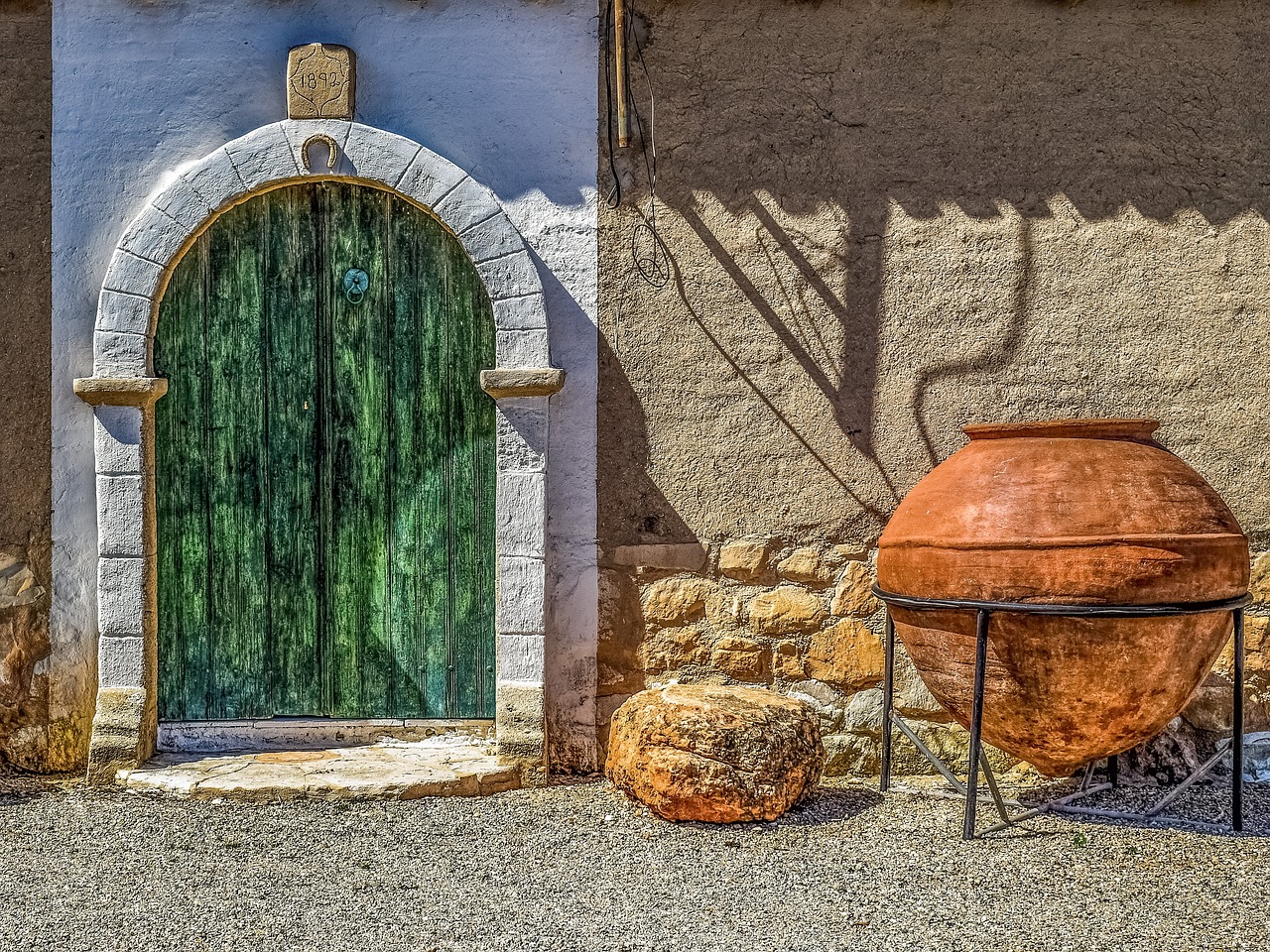
Community and Social Aspects
When you step into a pottery class, you're not just entering a space filled with clay and tools; you're diving into a vibrant community of like-minded individuals who share a passion for creativity and expression. Pottery is more than a craft; it's a social experience that fosters connections and friendships. Imagine sitting at a wheel, surrounded by fellow potters, each lost in their own creative world yet united by the same goal: to mold something beautiful from a lump of clay. This unique environment can be incredibly uplifting and encouraging.
In pottery classes, you'll often find that the atmosphere is relaxed and supportive. Beginners and seasoned potters alike gather to share tips, techniques, and stories. It's common to hear laughter echoing through the studio as someone triumphantly unveils their latest creation or playfully critiques a friend's work. This camaraderie can turn a solitary hobby into a joyous group activity, making the learning process much more enjoyable.
Moreover, pottery classes can lead to collaborative projects, where participants join forces to create larger pieces or even host exhibitions. These collaborations not only enhance your skills but also allow you to experience the thrill of working together towards a common goal. Think of it as a potluck dinner, but instead of food, everyone brings their unique talents to the table, resulting in a rich tapestry of creativity.
Additionally, many pottery studios host community events such as open houses, workshops, and art fairs, providing excellent opportunities to showcase your work and meet others. Participating in these events can help you build lasting relationships with fellow artists and expand your network. It's like being part of a club where everyone is eager to support each other's artistic journeys.
In essence, the social aspect of pottery is just as significant as the craft itself. The friendships formed and the experiences shared can lead to a fulfilling journey that extends beyond the studio. So, if you're considering taking up pottery, remember that you're not just learning a skill; you're entering a vibrant community that celebrates creativity, collaboration, and connection.
- What should I wear to a pottery class? It's best to wear comfortable, old clothes that you don't mind getting dirty, as pottery can be quite messy!
- Do I need to bring my own materials? Many classes provide all necessary materials, but it's a good idea to check with the instructor beforehand.
- How long does it take to learn pottery? Learning pottery is a journey; some may feel comfortable within a few classes, while others take longer to master specific techniques.
- Can I sell my pottery after taking a class? Absolutely! Many potters start selling their creations after gaining some experience, often participating in local art fairs or online marketplaces.
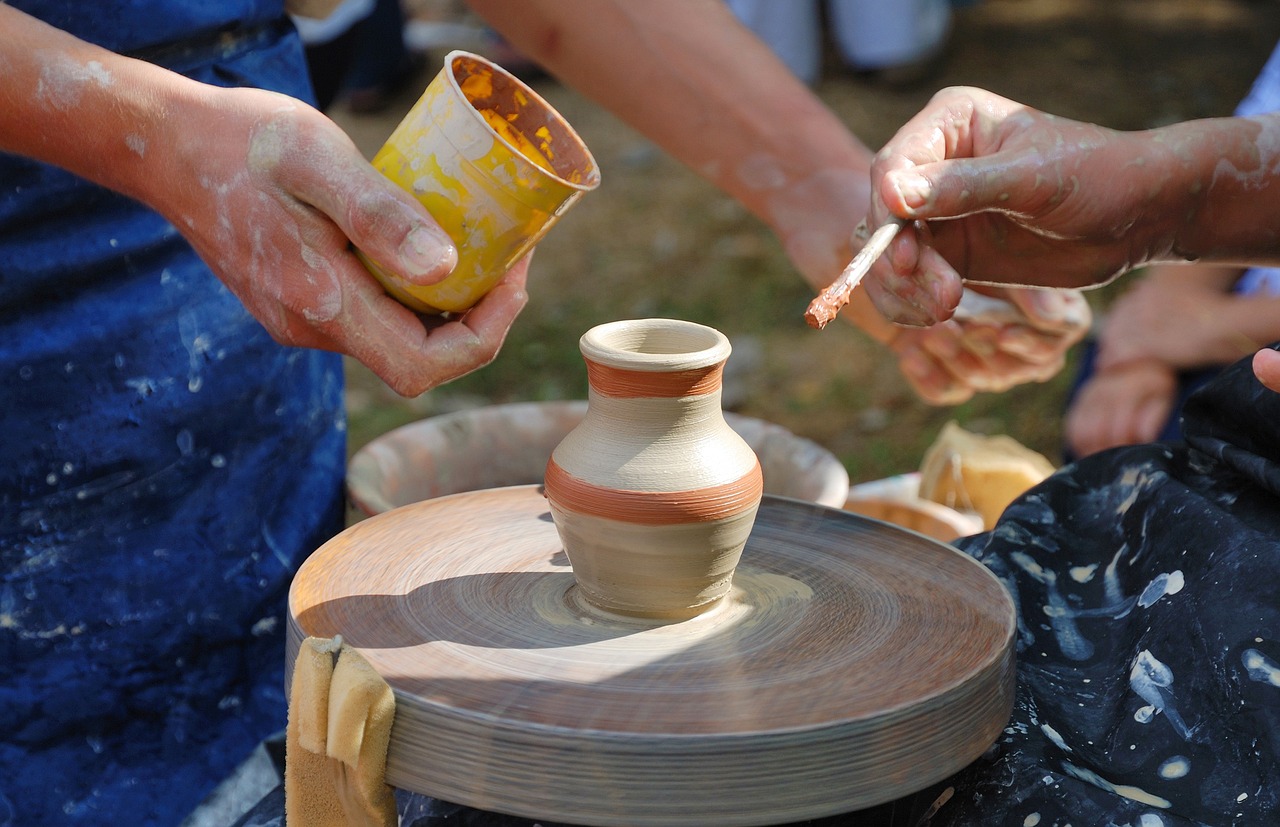
Showcasing Your Creations
Once you've poured your heart and soul into crafting beautiful pottery, showcasing your work can be one of the most rewarding experiences. It's like sending your creations out into the world to tell their own stories! Whether you’ve made stunning vases, intricate bowls, or unique sculptures, there are numerous ways to display and sell your pottery. Not only does this allow you to share your artistry with others, but it also opens up opportunities for connection and potential sales.
One of the most exciting avenues for showcasing your pottery is by participating in local art fairs. These events are a fantastic platform for artists to present their work to a wider audience. Imagine setting up your booth, surrounded by fellow artisans, and watching people admire your pieces. It’s a buzz like no other! To prepare for these events, consider factors such as booth design, pricing, and how to engage with potential customers effectively. A well-organized booth can make a significant difference in attracting buyers.
In addition to local fairs, creating an online presence is crucial in today’s digital age. Establishing a website or utilizing social media platforms can help you reach a global audience. Think of it as opening your own virtual gallery! You can showcase your work through beautiful photographs, share the stories behind each piece, and connect with art lovers from all over the world. Social media platforms like Instagram and Pinterest are particularly effective for visual artists, allowing you to share your creative process and engage with followers.
When building your online presence, consider the following strategies:
- High-Quality Photography: Invest time in taking clear, well-lit photos of your pottery. Natural light works wonders!
- Engaging Content: Share behind-the-scenes looks at your creative process, pottery tips, or even tutorials.
- Networking: Connect with other artists and potential customers through comments and collaborations.
Lastly, don’t underestimate the power of word-of-mouth. Encouraging friends and family to spread the word about your pottery can lead to unexpected opportunities. You might even find yourself receiving requests for custom pieces from people who admire your work. Remember, every piece you create is a reflection of your unique style and creativity, and sharing it with the world is a celebration of your artistic journey!
1. How can I start selling my pottery?
You can start by participating in local art fairs, setting up an online store, or using social media to showcase your work. Networking with other artists can also provide valuable insights and opportunities.
2. What should I consider when pricing my pottery?
When pricing your pottery, consider the cost of materials, time spent creating the piece, and market trends. Research similar items to find a competitive yet fair price.
3. How can I improve my pottery skills?
Joining pottery classes, watching online tutorials, and practicing regularly can greatly enhance your skills. Don’t hesitate to experiment with different techniques and styles!
4. Is it necessary to have a website to sell pottery?
While it’s not strictly necessary, having a website can significantly boost your visibility and credibility. It serves as a central hub for showcasing your work and connecting with customers.
5. What are the benefits of participating in local art fairs?
Local art fairs allow you to connect with your community, gain exposure, and receive immediate feedback on your work. They are also a great way to network with other artists and potential customers.
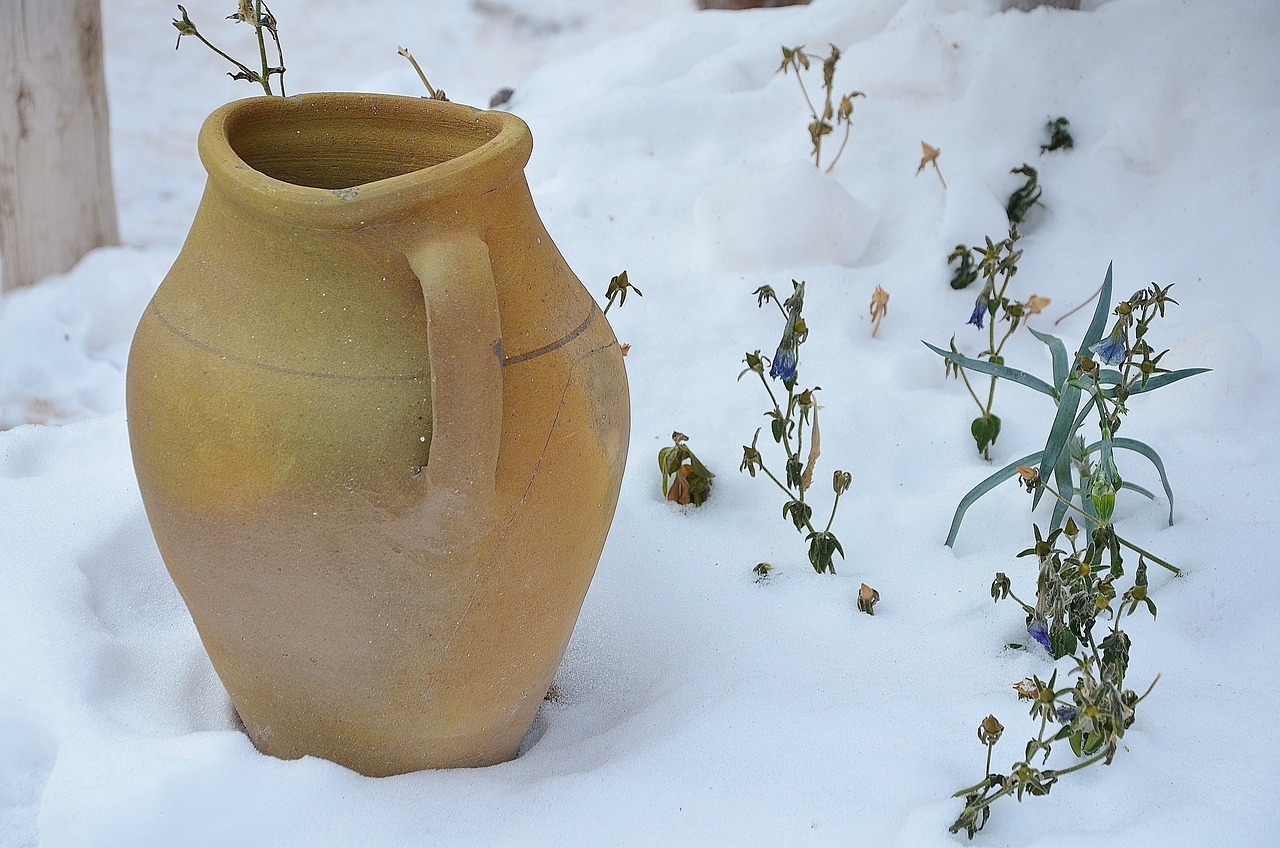
Participating in Local Art Fairs
Participating in local art fairs is not just about showcasing your pottery; it’s an exciting adventure that can significantly enhance your creative journey. Imagine the thrill of setting up your booth, surrounded by vibrant art and enthusiastic visitors. Local art fairs provide a unique platform to connect with your community, share your passion for pottery, and even make some sales along the way!
When preparing for an art fair, it’s essential to consider a few key factors that can make your experience more rewarding. First, selecting the right fair is crucial. Look for events that attract an audience interested in handmade crafts. This ensures that your pottery is seen by people who appreciate the time and effort that goes into creating each piece. Research the fair’s history, past attendance, and overall vibe to ensure it's a good fit for your work.
Next, the setup of your booth can make a world of difference. A well-organized and visually appealing display will draw in potential customers. Consider using tablecloths that complement your pottery, and arrange your pieces in a way that invites people to explore. You can even create a small backdrop that reflects your unique style or brand. Remember, first impressions matter!
Additionally, having business cards or flyers handy can help visitors remember you after the event. These materials should include your contact information and social media handles, making it easy for them to follow your work online. Engaging with your audience is key—don’t hesitate to share the stories behind your creations or the techniques you used. This personal touch can turn casual visitors into loyal fans.
Lastly, be prepared for a variety of reactions. Not everyone will love your work, and that’s okay! Take constructive criticism in stride and use it to improve your craft. Remember, every interaction is an opportunity to learn and grow. So, whether you sell a lot or just a few pieces, the experience of participating in a local art fair can be invaluable.
In summary, local art fairs are a fantastic way to showcase your pottery, connect with the community, and gain insights into what resonates with your audience. Embrace the experience, and who knows? You might just find your next big inspiration or a new friend who shares your passion for pottery!
- How do I find local art fairs to participate in?
Check community boards, social media groups, and local art organizations for upcoming events. - What should I bring to an art fair?
Bring your pottery, display materials, business cards, and a positive attitude! - Is it worth participating in art fairs?
Absolutely! They provide exposure, networking opportunities, and a chance to sell your work. - How can I improve my chances of selling at an art fair?
Engage with visitors, share your story, and create an inviting display to attract potential customers.
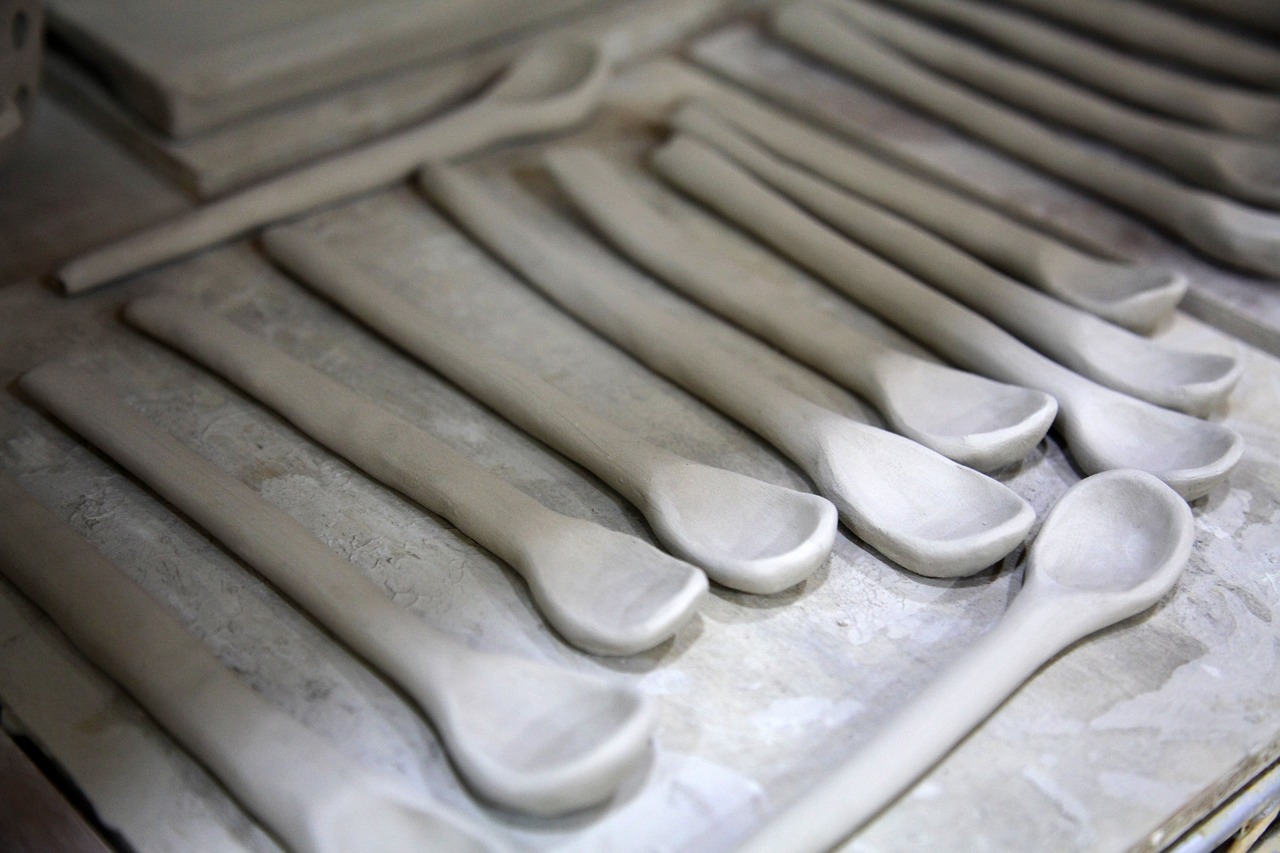
Creating an Online Presence
In today’s digital age, establishing an online presence is more important than ever, especially for artists and artisans like potters. Imagine your beautiful creations reaching audiences beyond your local community—sounds incredible, right? By leveraging the power of the internet, you can showcase your pottery to a global audience, turning your passion into a potential source of income. But where do you begin?
First, consider setting up a dedicated website or blog. This serves as your online portfolio, a hub where you can display your work, share your creative process, and even tell your story. Platforms like Wix, Squarespace, or WordPress make it easy to design a visually appealing site without needing extensive coding knowledge. Your website should include:
- Gallery of Your Work: High-quality images of your pottery pieces.
- About Me Section: A personal touch that connects you with your audience.
- Contact Information: Make it easy for potential customers to reach you.
- Blog: Share tips, techniques, and updates about your pottery journey.
Next, dive into social media! Platforms like Instagram, Facebook, and Pinterest are fantastic for visual artists. Instagram, in particular, is a goldmine for potters because it allows you to showcase your work with stunning visuals and engaging captions. Here are a few tips for maximizing your social media presence:
- Post Regularly: Consistency helps keep your audience engaged.
- Use Hashtags: Research relevant hashtags to increase the visibility of your posts.
- Engage with Followers: Respond to comments and messages to build a community.
- Share Behind-the-Scenes Content: Show your process, tools, and workspace to create a personal connection.
Don’t forget about online marketplaces! Websites like Etsy or Shopify allow you to set up an online store where you can sell your pottery directly to customers. When setting up your shop, ensure you have:
| Element | Description |
|---|---|
| Product Descriptions | Write clear, engaging descriptions that highlight the unique features of each piece. |
| Quality Photos | Invest time in capturing high-quality images that showcase your pottery from different angles. |
| Pricing Strategy | Research similar products to price your items competitively while considering your time and materials. |
Finally, consider starting a newsletter. This is a fantastic way to keep your audience updated on new products, upcoming events, and special promotions. Use platforms like Mailchimp or Constant Contact to manage your email list and create visually appealing newsletters.
In conclusion, creating an online presence is not just about selling pottery; it’s about building a brand and connecting with others who share your passion. The internet offers a vast landscape of opportunities, and with a bit of effort and creativity, you can turn your pottery hobby into a thriving business. So, what are you waiting for? Dive in and start sharing your unique creations with the world!
Q: Do I need a website to sell my pottery online?
A: While having a website is beneficial, you can also sell your pottery through online marketplaces like Etsy or social media platforms.
Q: How can I improve my photography skills for showcasing my pottery?
A: Consider taking a few online photography courses or watching tutorials on platforms like YouTube to learn the basics of product photography.
Q: What social media platforms are best for artists?
A: Instagram and Pinterest are particularly effective for visual artists, while Facebook can help you connect with local communities.
Frequently Asked Questions
- What are the mental health benefits of pottery?
Engaging in pottery can significantly enhance your mental well-being. The process of shaping clay is not just about creating art; it’s a form of mindfulness that helps to reduce stress. As you focus on molding and crafting, you find a sense of calm that can be incredibly therapeutic. It’s like a mini-vacation for your mind!
- What essential tools do I need to start pottery?
Before diving into pottery, you’ll need a few basic tools. These include a pottery wheel (if you’re throwing), various types of clay, a set of sculpting tools, sponges, and a kiln for firing your creations. Think of these tools as your trusty sidekicks on your pottery adventure!
- What types of clay should I consider?
There are several types of clay, each with its own unique characteristics. For beginners, earthenware is a fantastic choice due to its ease of use. If you're looking for something more durable, stoneware is ideal for functional pieces. Each type of clay can lead you down different creative paths!
- How do I find a good pottery class?
Finding the right pottery class can enhance your learning experience tremendously. Look for classes that have experienced instructors, a reasonable class size, and a supportive atmosphere. It’s like searching for the perfect pair of shoes—comfort and fit are key!
- What can I expect from a pottery class?
In a pottery class, you can expect a mix of learning and socializing. You'll get hands-on experience with different techniques, and there’s a good chance you’ll meet fellow pottery enthusiasts. It’s a great way to make friends while exploring your creative side!
- How can I showcase my pottery creations?
Once you've crafted your masterpieces, showcasing them can be incredibly rewarding! You can participate in local art fairs, which allow you to connect with a wider audience. Additionally, creating an online presence through social media and marketplaces can help you reach potential customers far and wide!
- What are some tips for participating in local art fairs?
When preparing for local art fairs, make sure to have a well-displayed booth showcasing your best pieces. Bring along business cards and be ready to engage with visitors. It’s all about making connections and sharing your passion for pottery!
- How do I build an online presence for my pottery?
Building an online presence involves creating social media profiles where you can share your work and the stories behind them. Consider setting up an online store on platforms like Etsy, where you can reach art lovers from all over. It’s like opening a window to the world for your pottery!


















